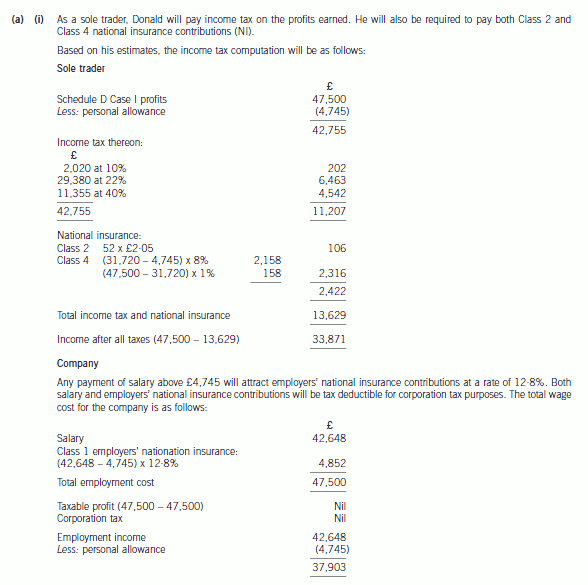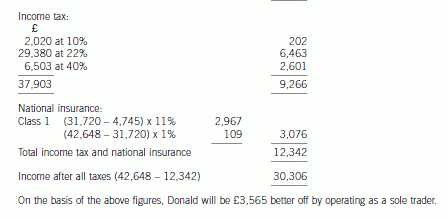看看有你所在的台湾有上榜吗——ACCA中国考点分布城市
发布时间:2020-01-08
还有两个多月的时间就又要迎来新的一季ACCA考试了。备考的ACCAer们准备的怎么样了呢?虽然现在看似时间还算充足,但除去周末和春节假日,给大家复习的时间其实已经不算太多了。因此,51题库考试学习网建议有参加3月份考试的ACCAer们现在开始可以着手准备啦!什么?你竟然不知道考试地点在哪里?不用担心,51题库考试学习网会为大家解决这个问题,快来看看离家近不近呢?由于目前2020年3月份的ACCA考试地点暂未公布,大家可以参考一下往年的考试地址,根据考试时间和地点提前做好相应的安排,避免考试迟到:
北京考点
I998北京广播电视大学
海淀区大钟寺东路5号北京广播电视大学4号教学楼(北三环大钟寺古钟博物馆往北500米)
I837首都经济贸易大学红庙校区
北京朝阳门外红庙金台里2号4号教学楼
I866北京市教育考试指导中心
北京市安定门外外馆东街23号
河北考点
I769保定
河北省保定市恒祥北大街3188号河北金融学院东门教学楼C区1楼071051
上海考点
I987上海东北
上海开放大学(主校区),国顺路288号
I997上海西南
好望角大饭店,肇嘉浜路500号;青松城大酒店,肇嘉浜路777号
I844上海浦东
上海海事大学(东明路校区),东明路1336号
I849松江
上海市松江区文翔路1900号上海对外贸易学院松江校区
长沙考点地址:
I900长沙考点
湖南大众传媒职业技术学院南院,湖南省长沙市新建西路77号湖南大众传媒职业技术学院新教学楼
重庆考点
I893重庆
具体地址目前待定,届时会在您的准考证中直接显示
成都考点
I803成都市人才培训中心(成都市人事考试中心),四川省成都市中南大街56号,
I803四川大学出国留学人员培训部,四川省成都市科华北路(川大西门)
以上就是关于ACCA考试的部分考点地址,希望对你备考ACCA的你有所帮助。最后,51题库考试学习网祝福ACCAer们旗开得胜,相信自己,加油~
下面小编为大家准备了 ACCA考试 的相关考题,供大家学习参考。
(ii) analytical procedures, (6 marks)
might appropriately be used in the due diligence review of MCM.
(ii) Analytical procedures
Tutorial note: The range of valid answer points is very broad for this part.
■ Review the trend of MCM’s profit (gross and net) for the last five years (say). Similarly earnings per share and
gearing.
■ For both the National and International businesses compare:
– gross profit, net profit, and return on assets for the last five years (say);
– actual monthly revenue against budget for the last 18 months (say). Similarly, for major items of expenditure
such as:
– full-time salaries;
– freelance consultancy fees;
– premises costs (e.g. depreciation, lease rentals, maintenance, etc);
– monthly revenue (also costs and profit) by centre.
■ Review projections of future profitability of MCM against net profit percentage at 31 December 2004 for:
– the National business (10·4%);
– the International business (38·1%); and
– overall (19·9%).
■ Review of disposal value of owned premises against book values.
■ Compare actual cash balances with budget on a monthly basis and compare borrowings against loan and overdraft
facilities.
■ Compare the average collection period for International’s trade receivables month on month since 31 December
2004 (when it was nearly seven months, i.e.
$3·7
–––– × 365 days) and compare with the National business.
$6·3
■ Compare financial ratios for each of the national centres against the National business overall (and similarly for the
International Business). For example:
– gross and net profit margins;
– return on centre assets;
– average collection period;
– average payment period;
– liquidity ratio.
■ Compare key performance indicators across the centres for the year to 31 December 2004 and 2005 to date. For
example:
– number of corporate clients;
– number of delegates;
– number of training days;
– average revenue per delegate per day;
– average cost per consultancy day.
For this part, assume today’s date is 15 August 2005.
5 (a) Donald is aged 22, single, and about to finish his university education. He has plans to start up a business selling
computer games, and intends to start trading on 1 April 2006, making up accounts to 31 March annually.
He believes that his business will generate cash (equal to taxable profits) of £47,500 in the first year. He
originally intended to operate as a sole trader, but he has recently discovered that as an alternative, he could
operate through a company. He has been advised that if this is the case, he can take a maximum gross salary
of £42,648 out of the company.
Required:
(i) Advise Donald on the income tax (IT), national insurance (NIC) and corporation tax (CT) liabilities he
will incur for the year ended 31 March 2007 trading under each of the two alternative business
structures (sole trade/company). Your advice should be supported by calculations of disposable income
for both alternatives assuming that in the company case, he draws the maximum salary stated.
(7 marks)


3 The Stiletto Partnership consisted of three partners, Clint, Ben and Amy, who shared the profits of the business
equally. On 28 February 2007 the partners sold the business to Razor Ltd, in exchange for shares in Razor Ltd, with
each former partner owning one third of the new company.
The recent, tax adjusted, trading profits of the Stiletto Partnership have been as follows:
£
Year ended 30 June 2006 92,124
1 July 2006 to 28 February 2007 81,795
Clint, who was 65 on 5 October 2006, retired when the business was sold to Razor Ltd. He is now suggesting that
if the sale of the partnership, and his retirement, had been delayed until 30 April 2007, his total tax liability would
have been reduced. Clint’s only other income is gross pension income of £6,100 per year, which he began receiving
in the tax year 2005/06. Clint did not receive any salary or dividends from Razor Ltd. It is estimated that the
partnership’s tax adjusted trading profits for the period from 1 March 2007 to 30 April 2007 would have been
£20,760. Clint has overlap profits of £14,250 brought forward from when the partnership began trading.
Razor Ltd manufactures industrial cutting tools. On 1 July 2007, Razor Ltd will subscribe for the whole of the ordinary
share capital of Cutlass Inc, a company newly incorporated in the country of Sharpenia. It is intended that Cutlass
Inc will purchase partly finished tools from Razor Ltd and customise them in Sharpenia. It is anticipated that Cutlass
Inc’s annual profits chargeable to corporation tax will be approximately £120,000.
Ben and Amy will be the directors of Cutlass Inc, although Ben will not be involved in the company’s business on a
day-to-day basis. Amy intends to spend one or two weeks each month in the country of Sharpenia looking after the
company’s affairs. The remainder of her time will be spent in the UK. Amy has employment contracts with both Razor
Ltd and Cutlass Inc and her duties for Cutlass Inc will be carried out wholly in Sharpenia. Cutlass Inc will pay for
Amy’s flights to and from Sharpenia and for her husband and baby to visit her there twice a year. Amy is currently
UK resident and ordinarily resident.
The system of income tax and corporation tax in the country of Sharpenia is broadly similar to that in the UK although
the rate of corporation tax is 38% regardless of the level of profits. There is a double tax treaty between the UK and
Sharpenia based on the OECD model treaty. The clause in the treaty dealing with company residency states that a
company resident in both countries under domestic law will be regarded under the treaty as being resident only in the
country where it is effectively managed and controlled. Sharpenia is not a member of the European Union.
Required:
(a) (i) Calculate Clint’s taxable trading profits for the tax years 2006/07 and 2007/08 for both of the
alternative retirement dates (28 February 2007 and 30 April 2007). (3 marks)

(iii) assesses TSC in terms of financial performance, competitiveness, service quality, resource utilisation,
flexibility and innovation and discusses the interrelationships between these terms, incorporating
examples from within TSC; and (10 marks)
(iii) The terms listed may be seen as representative of the dimensions of performance. The dimensions may be analysed into
results and determinants.
The results may be measured by focusing on financial performance and competitiveness. Financial performance may
be measured in terms of revenue and profit as shown in the data in the appendix of the question in respect of TSC. The
points system in part (a) of the answer shows which depots have achieved or exceeded the target set. In addition,
liquidity is another aspect of the measurement of financial performance. The points total in part (a) showed that
Leonardotown and Michaelangelotown depots appear to have the best current record in aspects of credit control.
15
Competitiveness may be measured in terms of sales growth but also in terms of market share, number of new
customers, etc. In the TSC statistics available in (a) we only have data for the current quarter. This shows that three of
the four depots listed have achieved increased revenue compared to target.
The determinants are the factors which may be seen to contribute to the achievement of the results. Quality, resource
utilisation, flexibility and innovation are cited by Fitzgerald and Moon as examples of factors that should contribute to
the achievement of the results in terms of financial performance and competitiveness. In TSC a main quality issue
appears to be customer care and service delivery. The statistics in the points table in part (a) of the answer show that
the Raphaeltown depot appears to have a major problem in this area. It has only achieved one point out of the six
available in this particular segment of the statistics.
Resource utilisation for TSC may be measured by the level of effective use of drivers and vehicles. To some extent, this
is highlighted by the statistics relating to customer care and service delivery. For example, late collection of consignments
from customers may be caused by a shortage of vehicles and/or drivers. Such shortages could be due to staff turnover,
sickness, etc or problems with vehicle maintenance.
Flexibility may be an issue. There may, for example, be a problem with vehicle availability. Possibly an increased focus
on sources for short-term sub-contracting of vehicles/collections/deliveries might help overcome delay problems.
The ‘target v actual points system’ may be seen as an example of innovation by the company. This gives a detailed set
of measures that should provide an incentive for improvement at all depots. The points system may illustrate the extent
of achievement/non-achievement of company strategies for success. For example TSC may have a customer care
commitment policy which identifies factors that should be achieved on a continuing basis. For example, timely collection
of consignments, misdirected consignments re-delivered at no extra charge, prompt responses to customer claims and
compensation for customers.
声明:本文内容由互联网用户自发贡献自行上传,本网站不拥有所有权,未作人工编辑处理,也不承担相关法律责任。如果您发现有涉嫌版权的内容,欢迎发送邮件至:contact@51tk.com 进行举报,并提供相关证据,工作人员会在5个工作日内联系你,一经查实,本站将立刻删除涉嫌侵权内容。
- 2020-01-09
- 2020-03-06
- 2020-03-21
- 2021-04-17
- 2020-01-09
- 2020-03-11
- 2021-10-09
- 2020-01-09
- 2020-09-03
- 2020-02-20
- 2020-02-02
- 2020-01-10
- 2020-05-20
- 2021-04-08
- 2020-01-09
- 2020-09-03
- 2020-01-09
- 2020-09-03
- 2021-01-13
- 2020-01-09
- 2020-01-09
- 2020-02-23
- 2020-02-21
- 2020-02-04
- 2020-04-10
- 2021-01-13
- 2020-01-10
- 2020-01-10
- 2020-01-09
- 2020-08-15